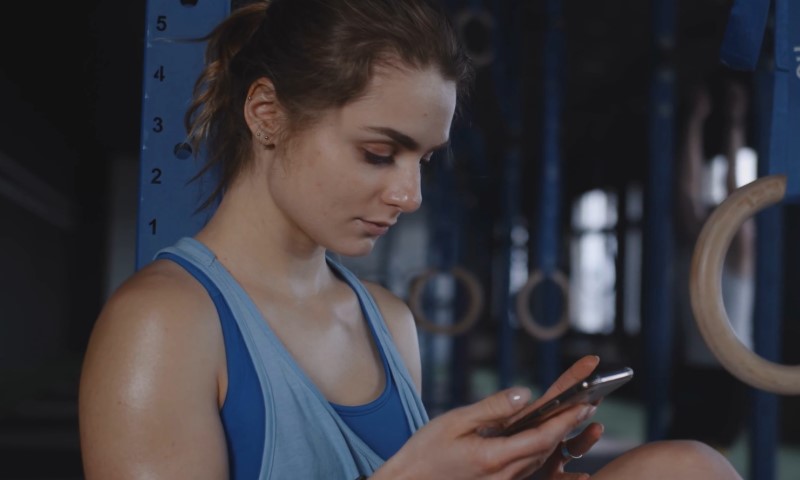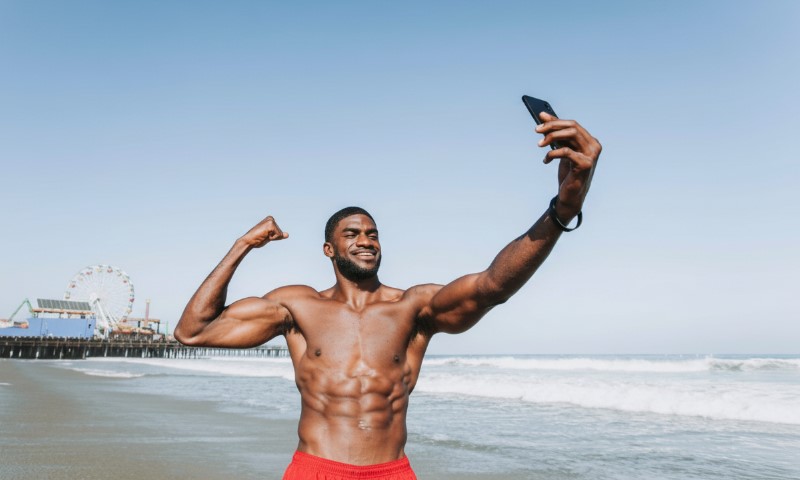Yes, and it’s more common than you think.
Wearing contact lenses during exercise can increase the risk of eye infection, especially if you sweat heavily, frequently touch your eyes, work out in dusty or humid environments, or use shared gym equipment. While many people wear contacts safely during physical activity, a combination of sweat, bacteria, and poor hygiene can raise the risk of infection significantly.
According to the Centers for Disease Control and Prevention (CDC), nearly 1 in 5 contact lens users reports having at least one lens-related eye issue, and physical activity is one of the contributing factors when proper hygiene isn’t followed.
Table of Contents
ToggleHow Eye Infections Happen During Exercise With Contact Lenses

| Trigger | How It Leads to Infection |
| Touching eyes with sweaty or dirty hands | Bacteria from gym equipment, towels, or skin transfer to the lens and eye surface |
| Sweat running into eyes | Sweat can carry skin bacteria and irritate the cornea, increasing the risk if lenses trap debris |
| Dry environments (gyms, outdoor wind) | Dry air dehydrates lenses, causing micro-abrasions that allow microbes to enter |
| Swimming or hot tubs | Water introduces harmful organisms like Acanthamoeba, which can cling to contact lenses |
| Leaving lenses in post-workout | Lenses that aren’t cleaned or changed after a workout hold bacteria longer |
When you wear contacts during intense exercise, your eyes are more vulnerable than you might think. Sweat doesn’t just sting — it can carry Staphylococcus aureus, Pseudomonas, and other microbes. Combine that with micro-damage from dry lenses and touching your eyes to wipe sweat or adjust lenses, and you’ve got a recipe for keratitis, conjunctivitis, or even corneal ulcers.
Types of Infections You Can Get From Contacts During Workouts
| Infection | Cause | Symptoms |
| Bacterial Keratitis | Bacteria entering through the lens surface cause damage | Pain, redness, blurry vision, discharge, light sensitivity |
| Fungal Keratitis | From organic matter or contaminated water | Eye pain, blurred vision, tearing, white or gray spot on the cornea |
| Acanthamoeba Keratitis | From pools, lakes, and hot tubs | Severe pain, redness, foreign body sensation, and vision loss (if untreated) |
| Conjunctivitis (“pink eye”) | Touching the eye with unwashed hands | Redness, itching, watery eyes, crusty discharge |
| Giant Papillary Conjunctivitis (GPC) | Reaction to dirty or old lenses | Itching, mucus buildup, discomfort, lenses feeling “off” |
High-Risk Situations to Avoid When Wearing Contact Lenses During Exercise

There’s nothing wrong with working out in contact lenses, but certain situations raise the risk of infection, irritation, or even long-term eye damage. Here are the most common high-risk habits and why you should avoid them:
Touching or wiping your face mid-workout
This is a major one. Whether you’re wiping away sweat, adjusting your lenses, or rubbing your eyes, your hands are likely carrying bacteria, especially after touching gym equipment, water bottles, phones, or towels. Each time you make contact with your eyes, you risk transferring that bacteria directly to your lens and the surface of your eye, where it can cause an infection.
Exercising in dusty, windy, or dry environments
Outdoor runners and cyclists are especially vulnerable to airborne particles and dry air. Dust or debris can easily sneak under the lens, scratching the cornea or creating tiny abrasions. These micro-injuries make your eye more vulnerable to infection and inflammation. Even air-conditioned gyms with low humidity can dry out your lenses, causing discomfort and increasing friction against your eyes.
Wearing your lenses longer than recommended
If your workout runs long or you leave your lenses in afterward without cleaning or replacing them, bacteria and protein deposits start to build up. The longer the lens stays in your eye post-exercise — especially if you’ve been sweating — the higher the bacterial load becomes. This is a common trigger for infections like bacterial keratitis or conjunctivitis.
Using shared towels, yoga mats, or gym equipment
Gyms are full of invisible microbes, including MRSA and staph bacteria. When you wipe your face with a shared towel or rest your head on a mat someone else just used, you pick up bacteria that can travel from your skin to your lenses. The same goes for unwashed hands touching shared weights, locker handles, or machines.
Swimming or showering with contacts in
This is one of the riskiest behaviors. Tap water, pools, lakes, and hot tubs all contain microorganisms, including Acanthamoeba, a parasite that loves to attach itself to contact lenses. Once it gets under your lens and into your eye, it can cause severe keratitis and even vision loss. Never swim or shower with lenses unless you’re wearing tight-fitting, waterproof swim goggles.
Tip: If you’re tired of juggling lenses, surgery, and workout hygiene, many active people explore longer-term fixes such as an EVO implantable contact lens, a vision-correcting lens placed inside the eye that eliminates the daily handling (and contamination risk) of surface contacts while preserving natural corneal shape.
Smart Habits That Help Prevent Eye Infections During Workouts

Now that you know the risks, here’s how to work out safely while wearing contacts — and keep your eyes healthy:
Start with clean hands — every time
Before putting in your lenses or touching your eyes for any reason, wash your hands thoroughly with soap and water, and dry them with a clean towel. This single habit drastically lowers your chances of introducing bacteria.
Switch to daily disposable lenses if you can
Daily lenses are used once and thrown away, which means there’s no time for bacteria to build up. If you’re active often or sweat a lot during your workouts, this is the safest option.
Resist the urge to rub your eye
When you’re sweating or feeling discomfort, it’s tempting to rub your eyes. Don’t. Doing so presses the lens against your eye, introduces germs, and can even dislodge or scratch the lens. Instead, dab around your eyes gently with a clean towel.
Swap out your lenses after intense workouts
If you’ve done a long or especially sweaty workout, consider removing your lenses afterward, cleaning your eyes, and switching to a fresh pair. This reduces the bacterial load and helps avoid post-exercise dryness or irritation.
Use sterile artificial tears during or after your session
Closed-eye, preservative-free eye drops can keep your lenses moist, flush out micro-debris, and soothe your eyes if they feel dry or strained after activity. Always carry a small single-use vial in your gym bag — they’re lightweight and super convenient.
Never swim or shower while wearing lenses
We can’t say this enough. No matter how quick the dip or rinse, water and contacts don’t mix. Remove your lenses before entering any wet environment. If you must keep them in (e.g., prescription dependence), wear sealed swim goggles to protect your eyes.
Invest in sport-specific protective eyewear
Whether you’re running outdoors, cycling, or playing a contact sport, protective eyewear designed for athletic use can shield your eyes from wind, sweat, dust, and flying particles. For contact lens users, it adds a crucial layer of protection between your environment and your eyes.
When to See a Doctor Immediately

If you experience any of the following after wearing contacts during a workout, remove your lenses and consult an eye specialist:
- Sharp or persistent eye pain
- Redness that doesn’t fade after resting
- Blurred vision or halos around lights
- Thick or colored discharge
- Sensitivity to light (photophobia)
- Feeling like there’s something stuck in your eye
Don’t try to “wait it out” — even minor infections can escalate quickly when contacts are involved. According to the American Academy of Ophthalmology, untreated keratitis can lead to corneal scarring or vision loss in as little as 24–48 hours.
Bottom Line
You can get an eye infection from exercising with contact lenses, but with the right hygiene and a few smart precautions, you can significantly reduce the risk. Your eyes are too important to take for granted, especially when bacteria, sweat, and contacts combine during physical activity. Stay clean, stay alert, and don’t ignore discomfort. A little extra care goes a long way toward keeping your vision safe.
Related Posts:
- Top 400 Hilarious Gym Quotes to Keep You Motivated
- Contact Lenses and Running - Addressing Common…
- 25 Simple Running Motivation Tips To Get You Moving
- How Can You Start a Career as a Running Coach?
- How Long Does It Take to Train for a Half Marathon?
- How Far Is a Half Marathon? Everything You Need to Know







